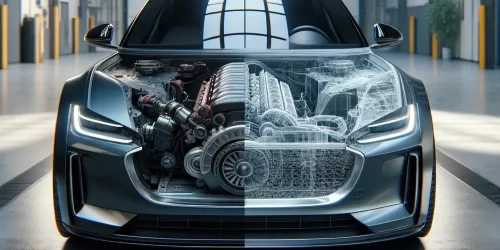The automotive aftermarket in the UK is undergoing a significant digital transformation driven by the rapid adoption of new technologies and changing consumer behaviours. This shift is revolutionizing how aftermarket products and services are marketed, sold, and delivered, ensuring businesses remain competitive and meet their customers’ evolving expectations. Here’s an in-depth look at how digitalization is reshaping the industry.
E-commerce and Online Marketplaces
One of the most noticeable changes is the surge in e-commerce and online marketplaces. Traditional brick-and-mortar stores are expanding their online presence, offering customers the convenience of shopping for parts and accessories from their homes. Platforms like eBay Motors and Amazon have become significant players in the aftermarket, providing a wide range of products with detailed reviews and competitive pricing.
Moreover, specialized automotive e-commerce sites are popping up, offering niche products and expert advice. These platforms make it easier for customers to find specific parts and provide valuable resources like installation guides and customer reviews, enhancing the overall shopping experience.
Mobile Apps and Digital Solutions
Mobile apps are becoming an essential tool for automotive enthusiasts and professionals alike. Apps like AutoZone and CarParts.com allow users to search for parts, check availability, and place orders directly from their smartphones. These apps often come with features like barcode scanning for quick product identification and integration with loyalty programs, providing a seamless and rewarding shopping experience.
Additionally, digital solutions are being developed to streamline the repair and maintenance process. For instance, diagnostic tools that connect to a vehicle’s OBD-II port can now communicate directly with a smartphone app, providing real-time data and troubleshooting advice. This level of connectivity and accessibility empowers DIY enthusiasts and professionals to diagnose and fix issues more efficiently.
Data Analytics and Personalization
Data analytics plays a crucial role in the digital transformation of the automotive aftermarket. Companies leverage big data to gain insights into customer behaviour, preferences, and buying patterns. This information personalises marketing efforts, recommends products, and optimises inventory management.
Personalization extends beyond marketing; it also transforms product development and sales. For instance, predictive analytics can forecast demand for specific parts based on historical data and current trends, ensuring that businesses stock the right products at the right time. This improves customer satisfaction and reduces excess inventory and associated costs.
Integration of Augmented Reality (AR) and Virtual Reality (VR)
Augmented Reality (AR) and Virtual Reality (VR) are emerging as powerful tools in the automotive aftermarket. These technologies create immersive shopping experiences, allowing customers to visualize how parts and accessories will look and fit on their vehicles before purchasing.
AR applications can overlay information on a physical vehicle, guiding users through complex installation processes step-by-step. Conversely, VR can provide virtual training environments for mechanics, enabling them to practice and perfect their skills without the need for physical components.
Customer Experience and Engagement
The focus on enhancing customer experience drives many of the automotive aftermarket digital initiatives. Businesses invest in user-friendly websites, efficient mobile apps, and comprehensive online support to ensure a smooth and satisfying shopping journey.
Social media and online communities are also significantly impacting customer engagement. Brands actively participate in automotive forums, host live Q&A sessions, and create content that resonates with their audience. This builds brand loyalty and fosters a sense of community among automotive enthusiasts.
Sustainability and Digitalization
Digital transformation also contributes to sustainability in the automotive aftermarket. Businesses can lower their carbon footprint by optimizing supply chains and reducing the need for physical stores. Furthermore, digital platforms facilitate the sale of refurbished and remanufactured parts, promoting a circular economy and reducing waste.
In conclusion, the digital transformation of the UK’s automotive aftermarket is not just a trend; it’s a necessity for staying relevant in a rapidly evolving market. E-commerce, mobile apps, data analytics, AR/VR, and a focus on customer experience are vital components driving this change. As technology advances, the automotive aftermarket will undoubtedly see even more innovative solutions that enhance efficiency, sustainability, and customer satisfaction.
For further insights and detailed reports on this topic, you can refer to sources like Grant Thornton, SMMT, and The Engine Block (Grant Thornton UK LLP) (SMMT) (The Engine Block).




